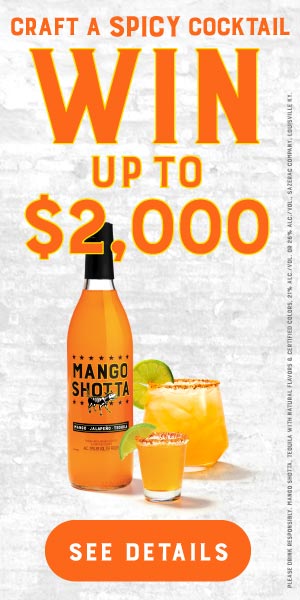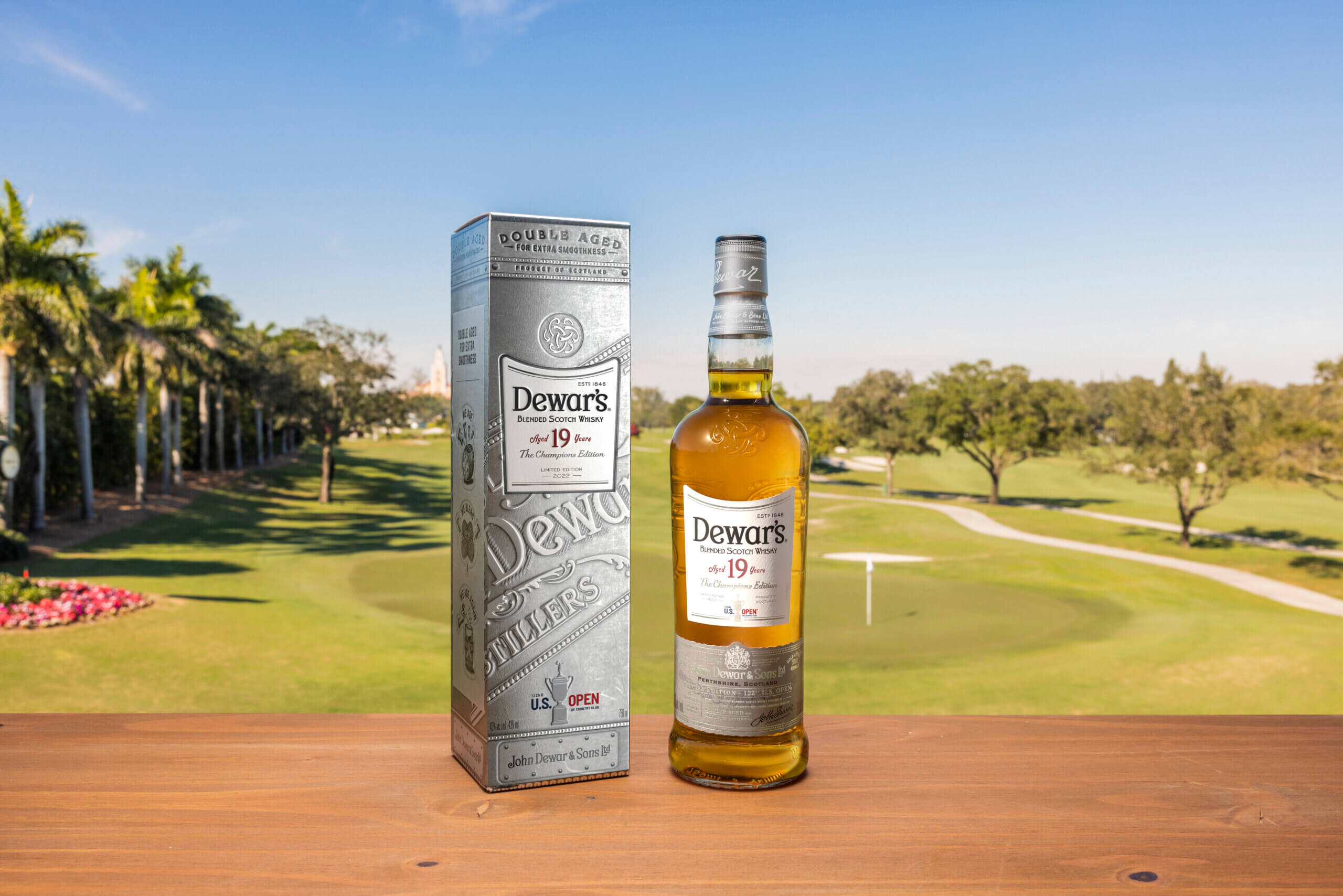Explore the Best Rum Brands: Top 10 Caribbean Rums
By Alana Tielmann
Discover the Finest Caribbean Rums: A Journey from Tradition to Excellence
Centuries ago, rum was distilled from useless molasses that was left to spoil in the tropical heat and humidity for weeks before fermenting. Sipped straight off the still, no one was willing to wait for long-aging in a barrel for the spirit to soften; hence nicknames, “kill-devil” and “demon rum.”
Today, rum results are aromatically far funkier and pleasantly pungent depending on time, technology, and tropical location. Below is a breakdown of ten recognized rum brands across various Caribbean islands; each using selective distillation, filtration, and long-barrel aging to soften rum’s heat under the scorching sun.

Rhum Barbancourt
Haiti
Only in Cognac production do pot stills employ a double distillation system for crafting a fine spirit.
In 1862, Dupré Barbancourt of Charente, France carried the successful process to Port-au-Prince, Haiti applying it to (non-traditional) rhum-making – choosing fresh sugarcane juice rather than molasses found on surrounding islands.
He later diverted from the original process, implementing an efficient three-column continuous distillation system instead – where the first column strips the solid matter from the wash and the second and third columns serve to concentrate Rhum Barbancourt.
The liquid sits in French oak barrels then passes through a compounded blending system to impart purity and ensure consistency before bottled additive-free.
Let’s not forget the disastrous earthquake that shattered the Caribbean country back in 2010. It robbed the famed distillery of nearly one-third of its aged stock, valued around $4 million!
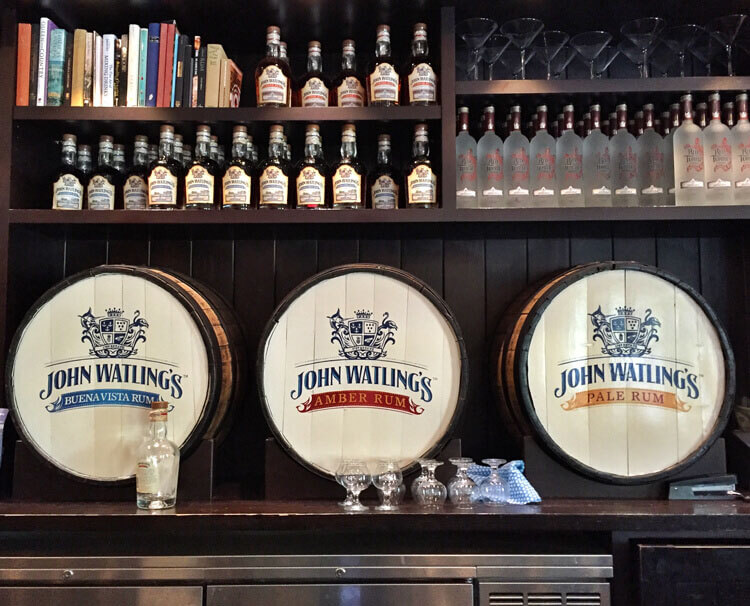
John Watling’s Rum Tasting Room
John Watling’s Rum
Bahamas
There’s no reason to deny it – we’ve come running for the rum of the Caribbean. Sure, Bahamian rum is a potent tropical elixir, though there are plenty of smooth blends to sample while sailing island-to-island before shipwreck (or in this case, hangover).
Downtown Nassau’s John Watling’s Distillery sits on the historic Buena Vista Estate, overlooking the harbor. The 1789 estate, meaning “beautiful view,” is perched atop the highest point on New Providence Island absorbing straight sun rays and occasional Angel’s Share wafts.
Named after a spiritual pirate who sailed the Bahamian seas in the 17th century, the distillery operates all small-batch rum production on-site; fermenting and distilling hand-cut sugarcane molasses in both pot and continuous stills, then coconut charcoal-filtered and aged (sometimes together) in one-time-used bourbon or sherry barrels. The rum rests for up to eight years under the Caribbean sun, later hand-blended into various expressions: John Watling’s woody Pale Rum, nutty Amber Rum, and caramelized Buena Vista Rum. There’s even an exclusive expression for nearby Atlantis Paradise Island.
Nassau’s heavy heat and active ocean breezes accelerate aging two-and-a-half times faster than in cooler climates, comparing each liquid offering to either premium whiskey or Cognac.
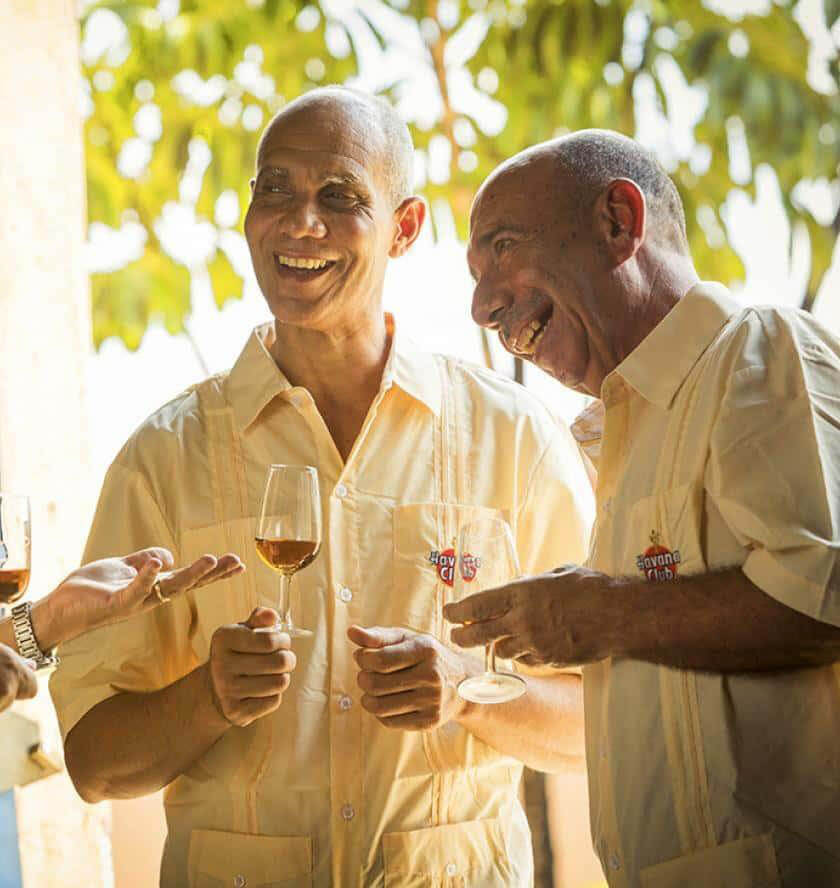
Havana Club Maestros del Ron Cubano
Havana Club
Cuba
Cuban “rum” remained as moonshine until 1796 when the Spanish crown lifted its ban on rum distilling. After colonizing Cuba, the Spanish planted rum’s raw material and produced their own light style: a molasses-based rum with a shorter fermentation (so the sugarcane wine, or fermented molasses is lighter) and full distillation in column or multi-column-stills for a more neutral base spirit before long-aging – similar to what Cuban rum is today.
Havana Club’s three best-selling rums – fruit-forward Havana Club 3 Años; double-aged Especial, and layered 7 – embody the rum style with its light- and freshness paired with core complexity and natural nuance from tropical aging. Each expression undergoes a prominent aging process to release peak flavors for specific cocktails or simple sipping. For instance, the youngest drop of 3 Años is aged in white oak barrels for three years. Others are triple-aged, even continuously-aged, where a small drop is put back each year.
“Cuban rum has its own specificities that are very hard to replicate anywhere else [other] than in Cuba,” said Don Juan Carlos Gonzalez, Maestro del Ron Cubano, or “master rum-maker” who is governed by the state to oversee all rum production. In 2013, Cuba acquired its own geographical indicator, Denominación de Origen Protegida (DOP) which endures native rums produced in strict accordance with traditional methods. The island-grown materials, double-distilled method, and “savoir-faire” that is poured into blending and aging, makes up the uniqueness of the Cuban spirit.
No confusing Cuban rums with Spanish-style rums from Venezuela or Guatemala.

Appleton Estate 12 Year Old
Appleton Estate
Jamaica
Jumping over to Jamaica – the British-style rum, per se, is molasses-based and heavier in body and flavor than the other styles. Much rum is made of traditional copper pot stills in Jamaica, sensing smaller batches with a powerful punch, including a lot of congeners and esters – the components that give alcohol its robust flavor. Jamaican rums also tend to have a longer fermentation giving the sugarcane wine a more intense flavor.
Deep in Jamaica’s Nassau Valley, Appleton Estate continues to perfect its complex rum-making for over 265 years now, making it the island’s oldest sugar estate and the country’s oldest operating distillery. The valley’s topography (of densely forested limestone hills) and climate promise a (redesigned) range unlike any other in the Caribbean. Appleton Estate Signature is a young, perfuming expression with hints of dried apricot and fresh peach, while the 12 Year Old Rare Casks is a superb blend of mixed notes: dark cocoa, delicate molasses, orange peel, rich vanilla, and roasted coffee.
Did we mention these smooth, sophisticated rums are passionately crafted by the spirits industry’s first-ever female Master Blender? Yeah, her name is Joy Spence.

12 Year Old Blue Mountain Reserve
Ingredients
Preparation
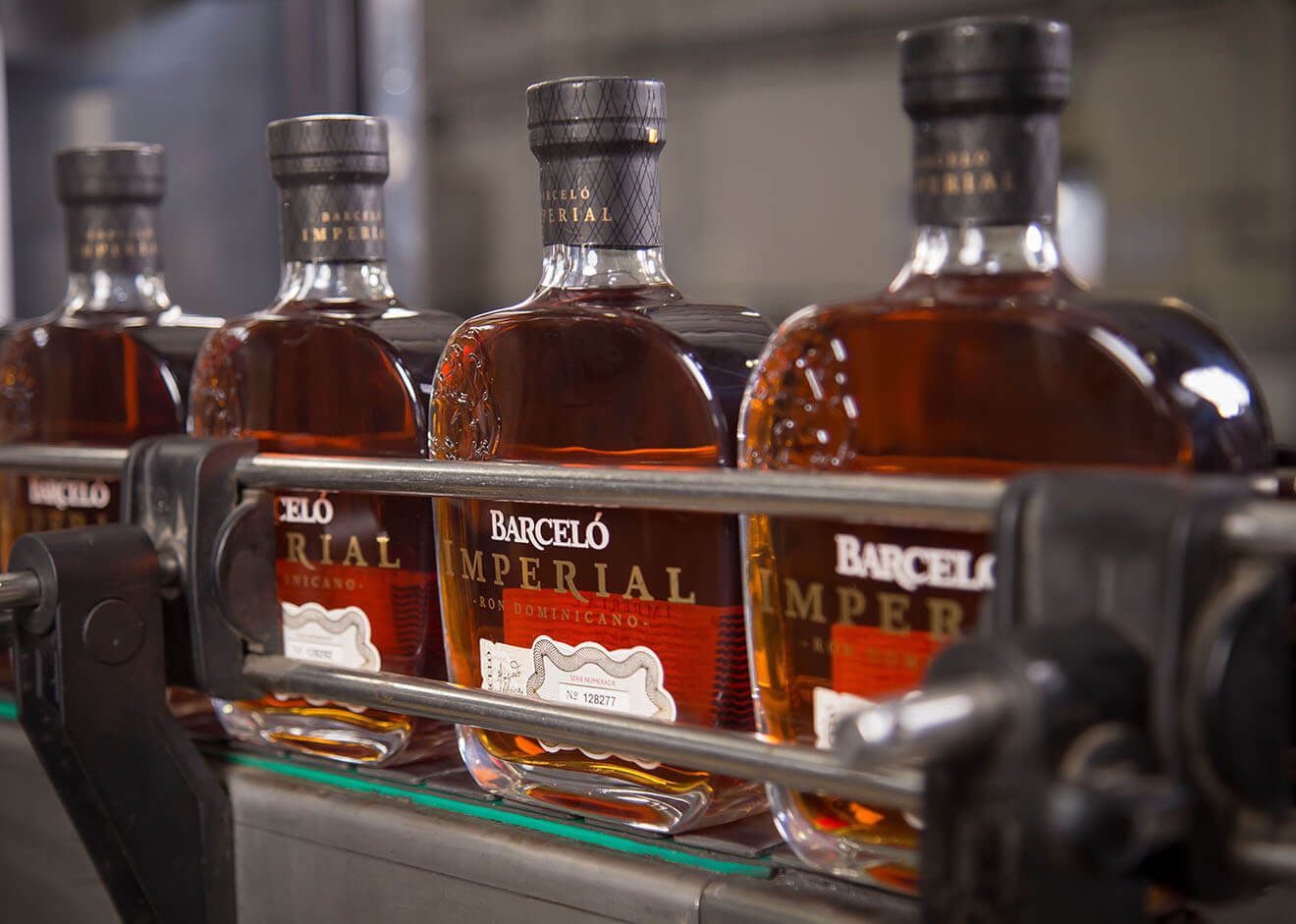
Ron Barcelo Imperial
Ron Barcelo
Dominican Republic
Being the world’s #1 exported dark rum is one reward but to be the region’s first “green” rum is another. The Dominican Republic’s Ron Barceló claims the grand title(s), achieving 100 percent carbon-neutral status in 2018 for its recycled rum-making process at its plant, Alcoholes Finos Dominicanos.
Situated in the countryside of San Pedro de Macorís, the distillery purifies and reuses all water byproducts; traps its own carbon emissions and utilizes waste materials as biomass fuel – an impressive performance for nature- and rum-lovers alike. The Barceló portfolio stretches from the award-winning Imperial to latest Gran Añejo Dark Series, a suave expression aged six years in ex-bourbon barrels (with a “heavy char” grade) for a long, sultry aftertaste.
Remember: rum rules in the Dominican Republic call for harvesting locally-grown sugarcane crops; on-site fermenting, distilling, and aging the native liquid in oak barrels for at least one year.

Don Q Distillery
Don Q
Puerto Rico
No doubt Bacardi has greater world recognition (and market share in the States), but in the competing brands’ homeland of Puerto Rico, Don Q is way more popular.
Produced at Destilería Serrallés since 1865, the multigenerational family rum brand holds two local prizes: Puerto Rico’s oldest continuously-run distillery, as well as the island’s best-selling rum. It takes its name from the famous 17th century Spanish novel, Don Quixote of La Mancha by Miguel de Cervantes, representing the search for a perfect world (or quest for perfection in rum-making).
In order to be “Puerto Rican Rum,” the sugarcane-based spirit must spend a minimum of one year in a barrel. This is true for clear rums like Don Q Cristal which sustains aging for one-and-a-half to five years in American white oak barrels to impart palatability.
“My biggest pet peeve is age claims,” sixth-generation rum-maker Roberto Serrallés told VinePair. “If we take a 20-year rum and put a drop of a one-year rum in it, we have to call it a one-year rum.” Instead, Don Q pours all efforts into a multiple distillation system to sustainably produce a cleaner, more polished flavor profile. Its heavy carbon filtration process aids to remove impurities too, though leaves the yummy rummy taste behind for liking.
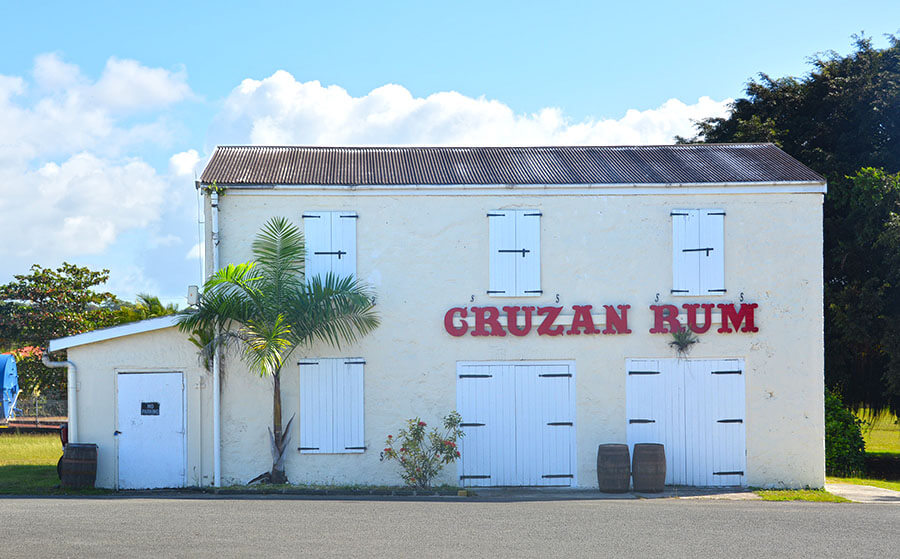
Cruzan Rum Distillery
Cruzan Rum
St. Croix, U.S. Virgin Islands
Whether sweet Brazilian cachaça or spicy Captain Morgan – rum is rum in the U.S. Non-negotiable? Cruzan Rum, a 240-year-old rum from St. Croix. Citizens of the tiny Caribbean island are called “crucian,” or cruzan which ties the locals to the long-standing rum brand.
The spirited history connects colonialism, 2017’s devastating Hurricane Maria, and some rivalry with the aforementioned “Captain.” But that doesn’t stop Cruzan from experimenting with liquid blends and charred barrels amid the historic ruins of an old sugarcane plantation named Estate Diamond.
In fact, the Single Barrel Estate Diamond is a unique single barrel product. The aged light rum is a blend of vintage rums placed in a freshly-charred new oak barrel for additional aging (about six to nine months) to release sweet oakiness with a warm buttery finish. The rum moves directly from barrel to bottle at an affordable price and winning award.
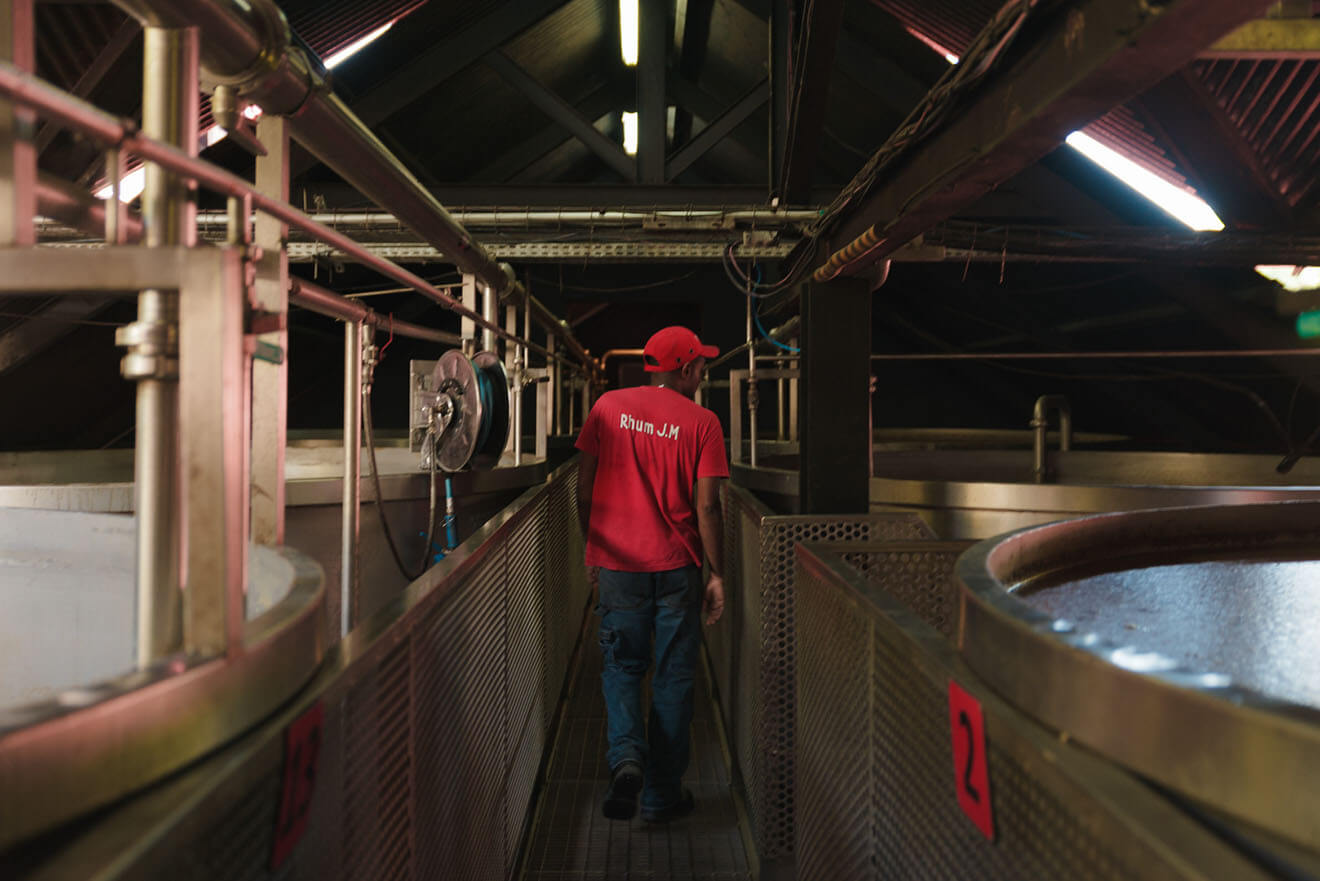
Rhum JM Distillery
Rhum J.M.
Martinique
Then there’s rhum. “Rhum Agricole,” actually – a French-style rum made from sugarcane juice (instead of molasses) assorted in white, gold, and dark colors, with flavors that incorporate vegetal notes into the complex category background.
Terroir plays an important role in this style. For Rhum J.M., the estate-grown sugarcane balloons in a full twelve-month cycle and is reaped in the spring season due to the intense humidity of the tropics and protection from the marine layer over the 1790 estate called Habitation Fonds-Préville. This is the most exclusive microclimate for sugarcane in the entire world. Rhum J.M. flavors also result from the porous volcanic soil, great ventilation from the steady sea breeze, and exceptional drainage on the sloping sugarcane fields.
On-site, the raw sugarcane is pressed in less than one hour from its cut delivering the richest juice from Rhum J.M. The juice naturally ferments into a sugarcane wine (or vin de canne) of about 5% ABV, and carefully distilled into Rhum Agricole after 36-48 hours in a Créole copper column. At 70% alcohol, both palate and perfume of the tropical terroir is retained.
After a three month’s rest in stainless steel tanks, the Rhum Agricole is either reduced to bottling strength using volcanic mineral water sourced from their estate spring, or to 60% ABV to then rest in re-charred oak barrels deep within the cellar.

Mount Gay Rum Range
Mount Gay
Barbados
Like Jamaica, Barbados believes in traditional copper pot stills for its rum production. Unlike Jamaica, Barbados claims the first legal “pot still house,” proving Mount Gay to be the world’s oldest rum producer. The namesake distillery honors the pioneering Sir John Gay who perfected the remarkable rum brand in 1703. Still today, only the finest sugarcane molasses and spring water separated from coral-stone soil are hand-picked and poured to create the Mount Gay rum selection.
However, the long-term Barbadian tradition was enhanced (with updated labels and liquid changes) when the golden brand welcomed the distillery’s and country’s first
female Master Blender last year. Trudiann Branker revisited Mount Gay’s core blends whilst “blending” together the refined palates of high-end brown spirit enthusiasts and the brand’s committed consumer base. As a result, she created a new, bodied blend for Mount Gay Black Barrel and a strenghtened blend for Mount Gay XO.
“I am wholeheartedly committed to embracing the expertise that we have inherited for over 300 years and am passionate about looking ahead as we combine both science and craft to explore what makes Mount Gay more than a rum,” said Branker.

Black Tot Rum
Black Tot
Across Caribbean Sea
Not to puzzle anyone here, but here’s a rum that balances the fruity, honeyed notes of Barbadian rum; the full-bodied elements of Guyanese rum (with native Demerara sugarcane), and the intense funk of Jamaican rum – three distinctive styles that standout in just a single sip. Black Tot represents true “Navy Rum,” honoring authentic rum-blending techniques developed by spirited privateers and sailors in the Royal Navy. The Finest Caribbean expression comprises rums from the foremost islands (of rum) for the British Navy to mix a blend full of jungle-like aromas, and roasted coffee and dark chocolate flavors.
Today, Black Tot continues to explore the bequest, complexity and diversity found in the various styles of Caribbean rum. To the spirit of the seas!
Savoring the Rich Tapestry of Caribbean Rums
As we conclude our voyage through the vibrant world of Caribbean rums, we are reminded of the rich tapestry that each bottle weaves – a blend of history, culture, and craftsmanship. From the robust flavors of Jamaica’s Appleton Estate to the nuanced aromas of Barbados’ Mount Gay, these top ten rums are not just spirits but stories bottled under the Caribbean sun. Whether you’re a connoisseur or a curious explorer, each rum offers a unique experience, inviting you to savor a piece of the Caribbean’s soul. So, raise a glass and celebrate the timeless art of rum-making that continues to captivate the world.









